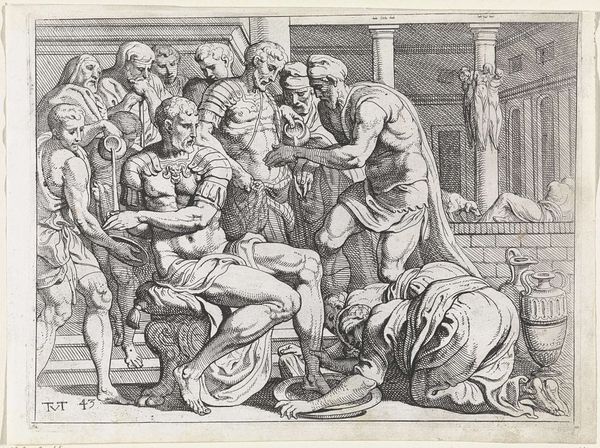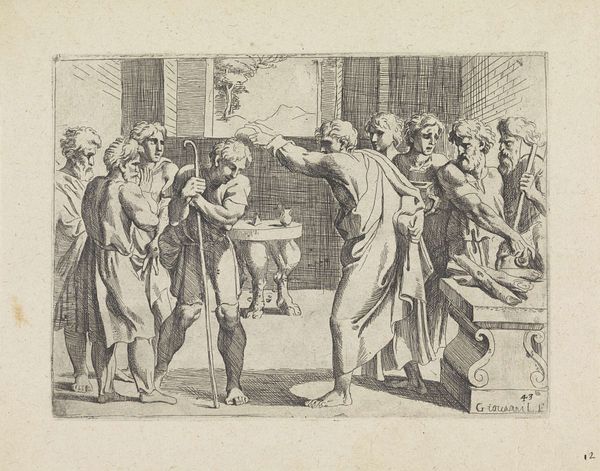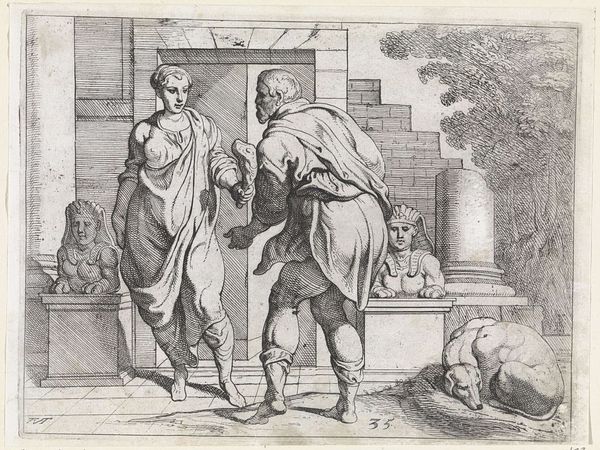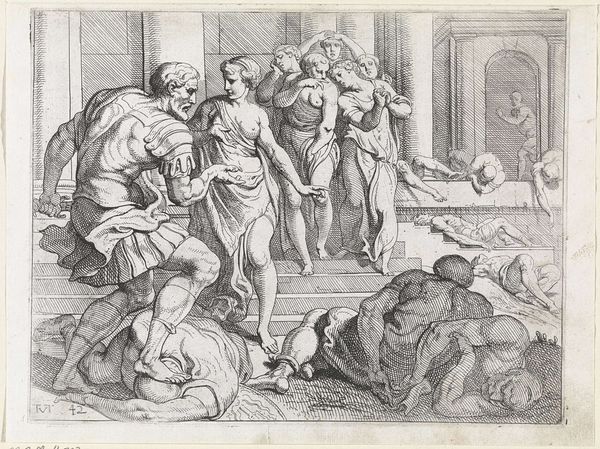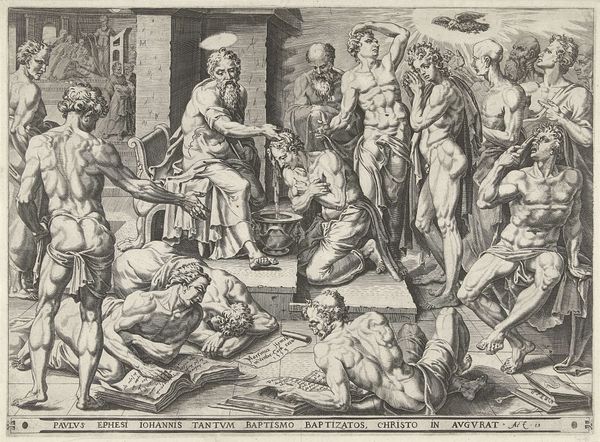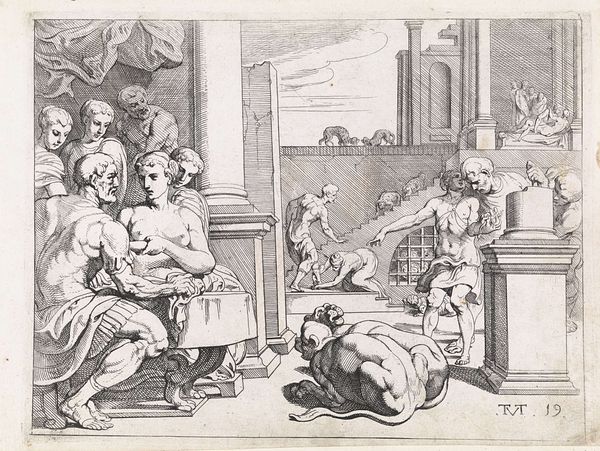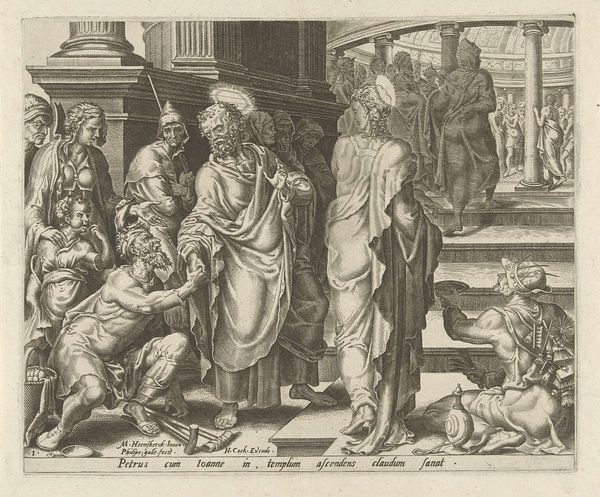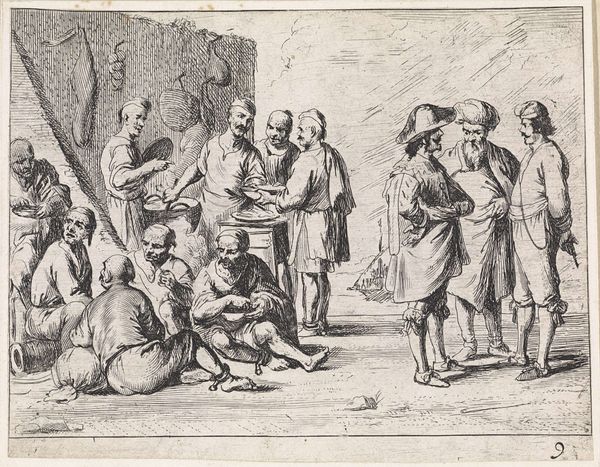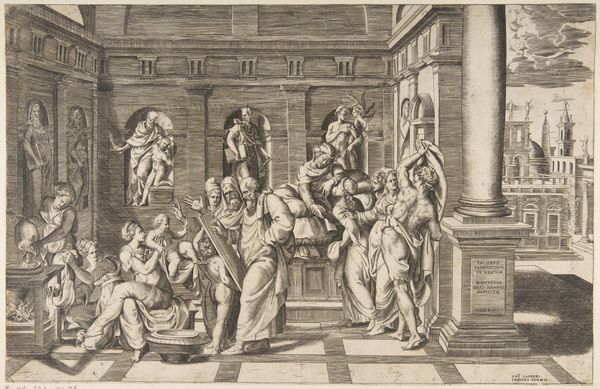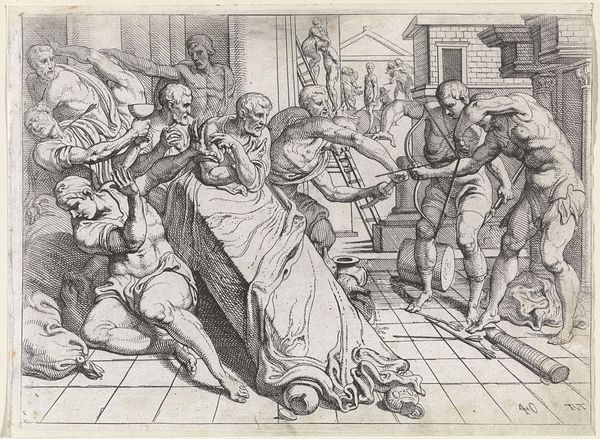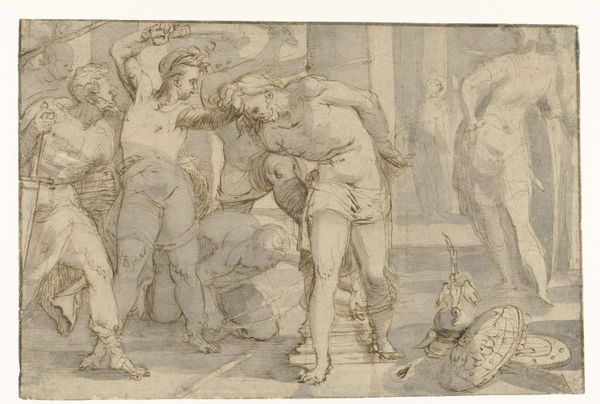
print, engraving
#
baroque
# print
#
pencil sketch
#
figuration
#
line
#
history-painting
#
engraving
Dimensions: height 198 mm, width 256 mm
Copyright: Rijks Museum: Open Domain
This etching, “Odysseus door zijn hond Argus herkend,” or “Odysseus Recognized by His Dog Argus,” was created by Theodoor van Thulden in the 17th century. Van Thulden was working in the wake of the Dutch Golden Age, a period marked by the rise of a powerful merchant class and new ideas about national and cultural identity. Here, van Thulden depicts a poignant moment from Homer’s Odyssey. After a twenty-year absence, Odysseus returns to his homeland of Ithica disguised as a beggar. Only his faithful dog Argus recognizes him. Consider the themes of loyalty and recognition in the context of 17th century Dutch society. The rise of a merchant class brought new attention to the domestic sphere. Dogs, like Argus, often symbolized fidelity and the virtues of home, hearth, and nation. While Odysseus is disguised, Argus sees through the surface to recognize the true identity of his master. In this scene, van Thulden asks us to think about what it means to truly see, to know, and to be recognized.
Comments
No comments
Be the first to comment and join the conversation on the ultimate creative platform.
